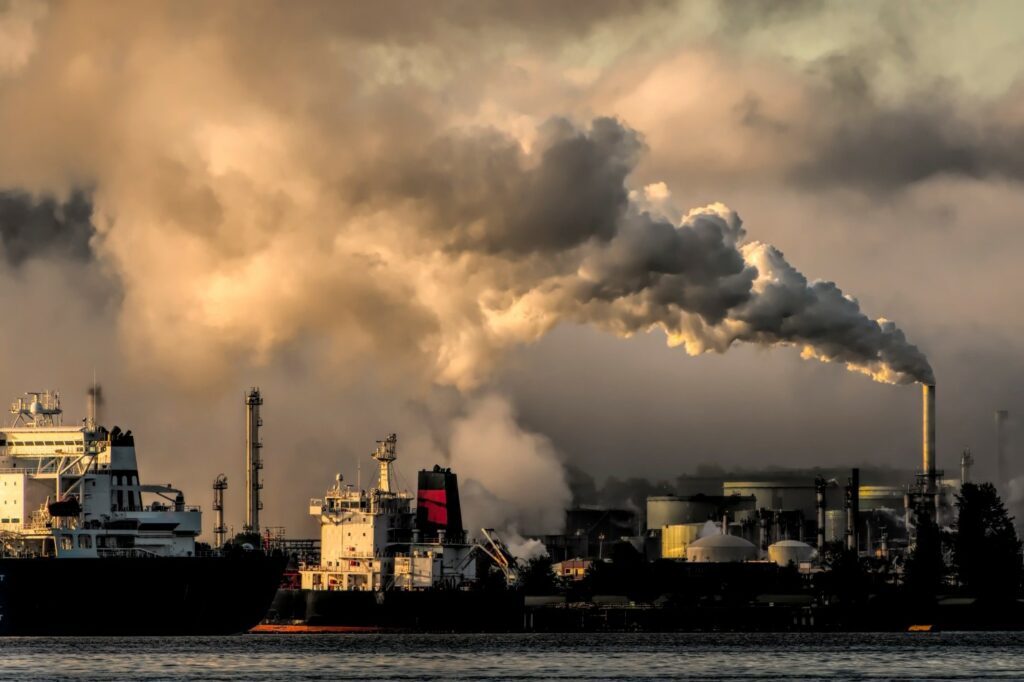
Specially written for SYSTEMSCHANGEALLIANCE.org
By: Rennifer Jayleen
With adverse weather conditions and hard-hitting calamities ravaging all parts of the world, corporations need to start addressing their contributions to climate change now more than ever. It is estimated that global carbon dioxide emissions hit a record high of 36.6 billion tons in 2022. Preventing or stopping rising temperatures will require a significant decline in these emissions. Another concern is the depletion of oil, which is high in demand but is also responsible for adverse environmental impacts. Advancements in renewable energy technology will need to be made to take oil’s place and keep most of it in the ground.
The good news is that more and more efforts have emerged to address this challenge. Various fields are making changes in order to fight climate change. Sciences, business, fashion design, and more have made a focus on environmental studies and sustainability a major consideration. Even better, climate change is being seen as a vital part of a student’s education. Case in point, climate change is being introduced to mathematics classes at every level of education. This is important as mathematics plays an important role in predicting the effects of climate change. Modern mathematics courses provide specializations in data science, coding, machine learning, statistics, and predictive modeling, which professionals can use to help address pressing climate change issues. From calculating the rate at which ice in the arctic thins to creating carbon calculators to cut down personal emissions, it’s clear that these fields are of great importance now more than ever. As the world becomes more environmentally aware, companies need to focus on reducing their carbon emissions to save the planet.
Why carbon emission tracking is vital
A lot of climate change action has been put forward as the responsibility of individuals. Still, a considerable part of the problem lies in large corporations — many of whom do little to remedy their footprint. It has been found that a fifth of carbon emissions come from the supply chains of a small number of multinational companies, and their footprints are sometimes larger than that of some countries. Using technology to keep track of emissions can help businesses spot problem areas in their processes and find ways to incorporate sustainable solutions in their place.
This awareness and change are also linked to better business, as consumers are more likely to purchase from companies that practice sustainability. Ethical consumerism is also helpful in tapping into more potential customers, especially the youth, who are becoming increasingly concerned about emissions and the environment.
How companies are tracking emissions
From an environmental and business standpoint, it is clear that action regarding emissions is becoming a necessity for corporations, and many have been starting to make changes. For example, clothing company Patagonia has built repair shops around the world to increase the longevity of their products and reduce the carbon footprint of creating new items.
Despite these good moves, a significant problem the US faces is that the reporting of corporate sustainability is mainly voluntary and often wildly inaccurate. For instance, data regarding methane levels in the Arctic permafrost was found to be five times higher than what was reported to the Environmental Protection Agency (EPA). Data and sustainability reports are currently being relied on to keep track of emissions, which is insufficient.
As technology advances, more ways to foster carbon awareness will likely appear soon. Software and apps are being developed to monitor and report on a company’s carbon emissions. For example, Emitwise is developing a platform that allows companies to automatically measure the electricity used by suppliers, the airplane flights taken by employees, and the hundreds of other energy uses that happen on any day of operations. This will help make reports much more frequent and regular, giving more numbers and data to work with. Advancements in satellites and cameras that detect these emissions as they pass through the atmosphere can also help point out patterns and allow businesses to address key problems.
There is still much to be done in emissions tracking, but with more growth in technology and well-trained professionals, change can be made to address these issues.


Community Discussion
Click here to start the discussion of this article.